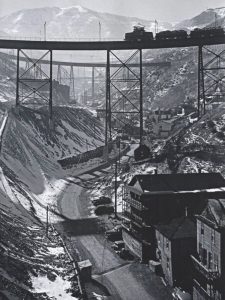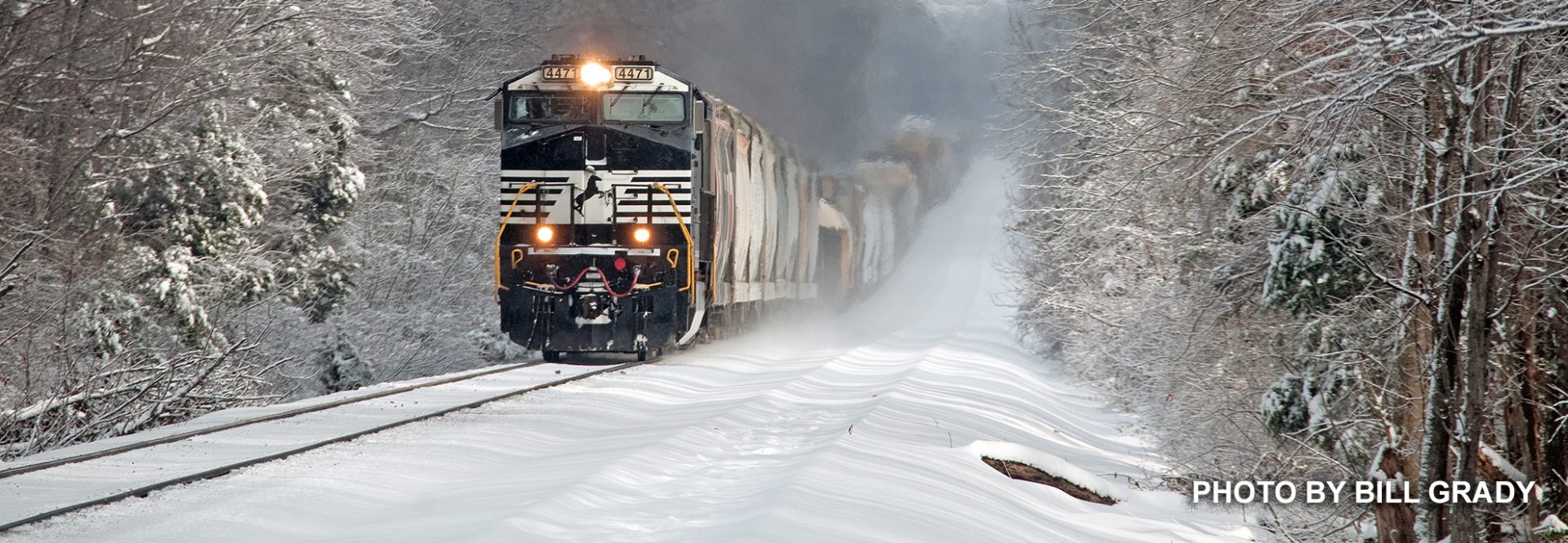 In 1942, the first full year of the U. S. involvement World War II, there were few sites as important to the war effort than a large copper mine in Bingham Canyon in Utah. The Office of War Information sent a young photographer named Andreas Feininger to document the mine pictorially and show how the ore was extracted. To be included was the role played by in-mine railroads.
In 1942, the first full year of the U. S. involvement World War II, there were few sites as important to the war effort than a large copper mine in Bingham Canyon in Utah. The Office of War Information sent a young photographer named Andreas Feininger to document the mine pictorially and show how the ore was extracted. To be included was the role played by in-mine railroads.
More than a hundred miles of rail line spiraled downward into the mine’s ever-widening amphitheater. More tracks connected the mine with other important sites such as waste dumps and a smelter and refinery several miles away.
During WW2, Bingham’s production spiked as miners strove to meet the war material needs. A single tank for example, required 800 pounds of copper, a large bomber a full ton. A battleship required 1,000 tons. Bingham produced one-third of all the copper used by the U. S. and its allies during the war.
Feininger stood on Bridge G and snapped our picture above. Having lived in Butte, Montana where the Anaconda Company’s Berkeley Pit continues to gobble up the town I found this picture fascinating. 1) How many more bridges crossing the canyon are behind the photographer? There are at least four visible up the canyon. Is Bridge A out of sight up the canyon, or way down and behind the lens? 2) The boarding houses in the foreground are classic. 3)The company houses up the draw are typical, very basic and minimal.
I don’t know about you, but I would get no sleep in the house directly under the closest bridge. Overloaded gondolas undoubtedly arrive at their destination, wherever and whatever, with a few less rocks in the hopper. 4) The snow covered walkway up the hill to the left is no doubt the route to the workplace. Looks like a long trek. 5) What a collection of vintage cars on the street.
The Berkeley Pit is a truck operation. They are BIG trucks, and today’s are probably triple the size of what I witnessed in 1969-73. A follow-up seems in order.
Submitted by Gary Ostlund.
Credits: Photo & story from the Summer 2014 Railroad Heritage published by the Center for Railroad Photography & Art.
